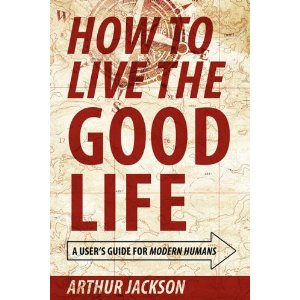Book Review: How to Live the Good Life: A User for Modern Humans by Arthur Jackson

There are many books, secular and religious, that instruct us on how to live the good life. But Arthur Jackson stands apart in grounding his approach on a system of philosophical “wisdom” informed by personal experience and a scientific view of human nature. The book avoids proverb-like simplicity in favor of a systematic treatment for intellectually curious minds seeking an in-depth understanding of potential pathways to an improved human condition.
For Jackson, achieving the good life is not a selfish pursuit. Rather, the good life is achieved by adapting our minds to the tasks of helping humanity as a whole. His approach begins with a focus on religion that discards its old foundation of willful spirits as causal agents in favor of a new foundation of human nature revealed by science. It is not possible to convey the book’s richness and system without an overview, however brief and inadequate, of its carefully constructed architecture.
Chapter 1: Humanity’s Goal defines targets for humanity as a whole, pursuit of which can help each of us find our personal paths to the good life. The chapter’s Table 1 is a brilliant stroke. It lists ten categories societal Wisdom Potential areas as they were manifested in our tribal ancestors as well as modern tribal societies, and contrasts each one with it respective “wisdom potential.”
Chapter 2: Science of Religion and Ethics presents a challenging new approach to the classical problem of “meaning” in our lives by applying a “science of religion and ethics.” This is a philosophical pursuit informed by “the practical application of wisdom,” that introduces Jackson’s system. The following chapters explore its various aspects.
Chapter 3: How to Live the Good Life describes a “science of religion and ethics” in some detail as a pathway to improving human communities at all scales including our global civilization.
Chapter 4: Humans as the Ultimate Reference System focuses on ways to replace “folk religions” by new institutions that “help real people with their real problems…to dramatically improve the quality of each person’s life. With this in mind he reminds us “humans are the ultimate reference system” because that is the way that nature has configured their minds.
Chapter 5: Religious and Moral Behavior focuses on “using a person’s wisdom potential to achieve a sustainable feeling of well-being.” Jackson presents 11 principles of “The Way to Wisdom” as a foundation for moral character development and as a strategy for transforming human society for the better.
Chapter 6: The Enlightened Person explores the nature of a person whose life is informed by the wisdom principles in the previous chapter to achieve attitudes capable of cultivating “a sustainable feeling of well-being.”
Chapter 7: The Enlightened Community describes the kind of society we can achieve when it members are largely “enlightened persons.”
Chapters 8-18 explore in some depth the meanings of each of the 1l wisdom principles defined in Chapter 5.
Chapter 19: Organizing an Enlightened Community; Chapter 20: Other Support Organizations; and Chapter 21: Spreading Meaning – A New Foundation for Civilization: These chapters focus on ways to actually achieve a global civilization grounded on enlightened communities.
How to Live the Good Life is a highly original and well thought out approach to human wellbeing that seems to recognize that many people today are already implementing some of principles and strategies. I believe that the United Nations Declaration of Human Rights and its Millennium Development Goal embody important parts of Jackson’s 10 Wisdom Potential Areas from Chapter 1; and the 11 Wisdom Principles at the heart of his book. The founding documents of the American Republic also seem to reflect some of this wisdom, but have lost considerable ground in the political turmoil of recent years.
The Economist scored 167 nations for their quality of democracy. Only thirty were “full democracies.” The top ten included five Scandinavia countries plus Luxembourg, Holland, Switzerland, New Zealand and Australia. The U.S. ranked 18th. I would love to see someone from a progressive think tank publish a study of how these top 10 plus the United States stack up against Jackson’s criteria for enlightened nations. For those that want to go deeper into Jackson’s approach he offers a series of 39 essays in a Volume II. The actual content is available at a website provided in the book.
I highly recommend this book to people who are serious about exploring sound philosophical and scientific principles in pursuit of enlightened communities that work hard to offer their people a good life.
